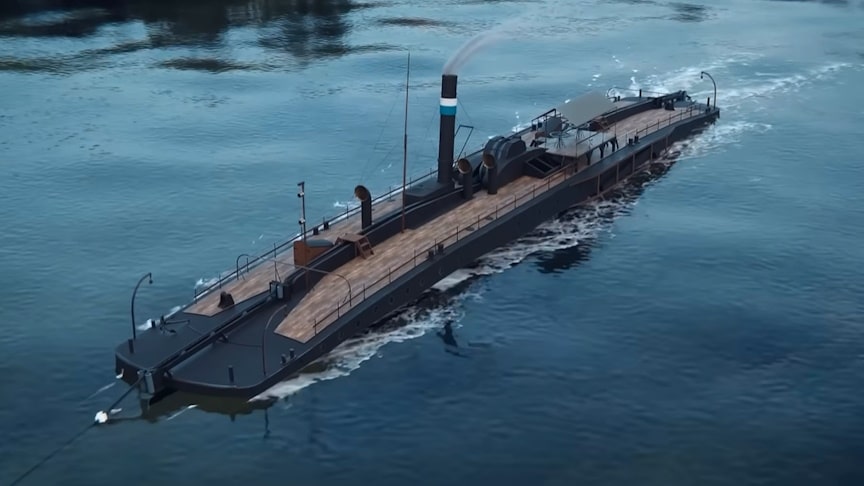A chain boat, chain tug or chain-ship was a type of river craft, used in the second half of the 19th century and first half of the 20th century on many European rivers, that made use of a steel chain laid along the riverbed for its propulsion.The chain was engaged using a steam engine mounted on board and enabled the boat to tow a string of barges.
source.image: Found And Explained
The hull of these symmetrically-designed boats was almost level with the surface of the water at the bow and stern. This design reduced the power needed to lift the tow chain onto the bow of the boat and also reduced the draught at the bow. The greater height of the boat in the centre made it easier to accommodate the steam engine. This deck shape – low at the bow and stern, and higher in the centre – is typical of all subsequently built chain boats.
Chain boats were favoured on shallow rivers with fast currents. This was the reason for the flat, shallow draught of their keels. Chain boats optimized for particularly shallow water had a draught of only 40 to 50 centimetres when unladen. Shorter chain boats – with lengths from 30 to 40 metres, and widths from 5 to 6 metres were more manoeuvrable and well suited to narrow rivers with many bends, for example on the Saale.
Advertisement
Longer craft – with lengths from 45 to 55 metres, and widths from 7 to 10 metres were more suited to relatively deep rivers such as the Elbe. The deeper a waterway was, the greater the power needed to lift the heavy chain. The bow of the ship was pulled down further. On larger boats this effect is less. The hull itself was made of iron or wood and could withstand light impacts with the riverbed. If, however, it was holed the hull was compartmentalized internally by several waterproof bulkheads that prevented the craft from sinking.











